Listings are required for essential system components, but acceptance of specific approvals—UL Listed, FM Approved, or otherwise—is determined by local code officials
“UL Listed” and “FM Approval”—along with their lesser-mentioned cousin, “certified”—are terms that circulate freely in the world of fire protection. Fire pumps, fire sprinklers, pipes, and a vast array of other fire protection products regularly undergo rigorous, third-party testing according to the standards of groups like FM Global and UL (formerly known as Underwriters Laboratories). But for many consumers, what remains unclear is the matter of which certifications to use and when they’re required.
In this article, we bring some clarity to the subject of listings and approvals. We explain what terms like these mean and who decides when a particular organization—be it UL, FM Global, or another group—has the credibility needed to certify specific types of fire protection products. Finally, we present readers with an overview of products requiring these certifications in NFPA 13: Standard for the Installation of Sprinkler Systems.
UL-listed and/or FM-approved residential and commercial fire sprinkler heads, check valves, angle valves, CPVC pipe fittings, and CPVC pipes are just part of our vast catalog of certified fire protection equipment—just take a look.
UL listed and FM approval act as industry synonyms for “listed” or “certified”—but the different terms have distinct definitions under NFPA codes and standards
Manufacturers, retailers, and consumers often describe fire protection products as “UL-Listed,” “FM-Approved,” having “FM approval,” and even “UL and FM approved.” But as Bruce Rose at CUI Insights notes, there’s really no such thing as “UL-approved”—and for good reason. “[I]f you look at their website, the only mention of ‘approvals’ is in examples of incorrect terms. UL avoids the word as a way of indicating that it really is the manufacturer’s responsibility to ensure safety and that UL only acts as an auditor[.]”
While this shorthand is popular (including, at times, in our own product pages), there’s another good reason to understand the difference between “listed” and “approved:” NFPA draws a sharp distinction between those products or installations that are “listed” and those that are “approved.”
From the 2022 edition of NFPA 13
3.2.1* Approved. Acceptable to the authority having jurisdiction.
3.2.3* Listed. Equipment, materials, or services included in a list published by an organization that is acceptable to the authority having jurisdiction and concerned with evaluation of products or services, that maintains periodic inspection of production of listed equipment or materials or periodic evaluation of services, and whose listing states that either the equipment, material, or service meets appropriate designated standards or has been tested and found suitable for a specified purpose.
A.3.2.3 Listed. The means for identifying listed equipment may vary for each organization concerned with product evaluation; some organizations do not recognize equipment as listed unless it is also labeled. The authority having jurisdiction should utilize the system employed by the listing organization to identify a listed product.
Code officials decide what’s approved, but it takes third-party evaluation to make a product listed. Based on tests assessing durability, longevity, and proper function—along with audits of manufacturers’ processes—listings from organizations like UL and FM Approvals provide stakeholders with a measure of confidence in products’ performance that’s not otherwise possible.
And here’s where it gets even more confusing: FM Approvals (the name of the independent testing branch of the FM Global insurance company) spurs the description “FM Approved.” This is NOT an “approval” according to the NFPA definitions above, as only the authority having jurisdiction can approve something (more on who that authority is in a second).
Thus, when you see either “UL listed” or “FM approved,” it essentially means it was tested by the safety organizations for a specific application and “listed.”

UL’s services boost consumer confidence and promote a safer world. Image source: UL
Are all listings equal? Only if the AHJ says so
A wide variety of organizations test and attest to the suitability of fire protection equipment. But even listed equipment must be “acceptable to the authority having jurisdiction,” or AHJ (NFPA 13 2022, 3.2.3). But who—or what—qualifies as an AHJ?
From the 2022 edition of NFPA 13
3.2.2* Authority Having Jurisdiction (AHJ). An organization, office, or individual responsible for enforcing the requirements of a code or standard, or for approving equipment, materials, an installation, or a procedure.
According to the NFPA 13 Handbook, the AHJ is often a fire marshal or building code official. But the term can cover a variety of public and private people or entities tasked with enforcing standards. In some instances, even an insurance company or corporate safety officer could be an AHJ.
Applied haphazardly, AHJs’ authority to decide which listings are acceptable—and which aren’t—could cause some rather arbitrary problems. However, while some contractors claim to have encountered this exact problem, Michael Johnston at Electrical Contractor suggests that AHJs in the world of electrical work, for example, often rely on lists of testing laboratories—published by the Occupational Safety and Health Administration (OSHA)—for the sake of “consistency.”
Those lists are provided as part of OSHA’s Nationally Recognized Testing Laboratory (NRTL) program. The NTRL “[r]ecognizes private sector organizations” that evaluate products for compliance with various standards. In fact, federal regulations require some products to have approval from an NRTL, including:
- Automatic fire sprinkler systems
- Portable fire extinguishers
- Fire doors (self-closing and not)
- Fixed extinguishing systems
- Automatic fire detection devices and equipment
In the world of fire protection, thankfully, an authority having jurisdiction is often your local or state fire official or government inspector, and they usually put great stock in items that are tested and listed by UL, FM, and other organizations recognized by the Nationally Recognized Testing Laboratory program.
A handful of nationally recognized testing laboratories, including UL and FM, are responsible for a wide variety of listed fire protection products
OSHA’s list of NRTLs, then, is often a starting point for local fire officials. The quick-reference guide below provides a current list of laboratories that test fire equipment ranging from fire sprinklers to amplifiers for fire alarms. While our list is extensive, it isn’t comprehensive—a single laboratory may be recognized for work with hundreds of standards. For more options, check out the current list of NRTLs available at OSHA.
Otherwise, review this select list:
| Fire Protection Products in the OSHA list of Nationally Recognized Testing Laboratories (August 2019) |
|||||||||||
| Testing Laboratory |
Products |
||||||||||
| CSA Group Testing and Certification
|
|
||||||||||
| FM Approvals
|
|
||||||||||
| Intertek Testing Services NA, Inc.
|
|
||||||||||
| NSF International
|
|
||||||||||
| QAI Laboratories, LTD
|
|
||||||||||
| Southwest Research Institute
|
|
||||||||||
| UL (aka Underwriters Laboratories)
|
|
||||||||||
Nearly all essential fire sprinkler system components need listings—and those that don’t have to meet other standards
One overarching rule guides NFPA 13’s requirements for system components and hardware: listings are required for any product that impacts a sprinkler system’s ability to control fires.
From the 2022 edition of NFPA 13
7.1.1.2 Unless the requirements of 7.1.1.3, 7.1.1.4, or 7.1.1.5 are met, all materials and devices essential to successful system operation shall be listed.
7.1.1.2.1 Valve components (including valve trim, internal parts, gaskets, and the like) shall not be required to be individually listed.
7.1.1.3 Equipment as permitted in Table 7.3.1.1 and Table 7.4.1 [select aboveground pipes and fittings discussed below] shall not be required to be listed.
7.1.1.3.1 Nonmetallic pipe and fittings included in Table 7.3.1.1 and Table 7.4.1 shall be listed.
7.1.1.4 Materials meeting the requirements of 17.1.2, 17.1.6.2, 17.1.6.3, and 17.1.7.3 shall not be required to be listed.
7.1.1.5* Components that do not affect system performance shall not be required to be listed.
The NFPA 13 Handbook clarifies that “system performance” pertains only to a sprinkler system’s ability to discharge water as designed. Thus, signs, drains, and pressure gauges don’t need to be listed—but fire sprinklers sure do. That said, NFPA and local governments also prescribe specific requirements for signs, drains, and pressure gauges; thus, any component used in a system must meet these enforced standards, and the local requirements (specified in fire codes) dominate.
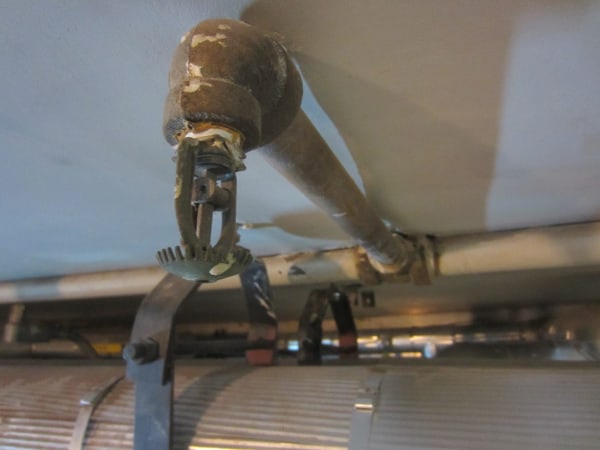
Before we get to NFPA 13’s listing requirements, it’s worthwhile to remember that listed products stay listed only when properly installed. In the example above, the fire sprinkler—which may otherwise be perfectly fine—isn’t listed for use in the pendent (hanging) orientation. The deflector, which distributes water as it flows from the pipes, won’t give the water the proper shape, putting areas nearby at risk.
Whether they’re UL listed, they have an FM, approval, or they’re built to NFPA specifications, pipes must meet rigorous standards in NFPA 13
Underground pipes and fittings (private fire service mains)
Underground pipes for fire service mains are a good example of an “either-or” scenario. These underground pipes must either meet one of several manufacturing standards listed in section 6.1.1.1 or they must be listed.
If it doesn’t meet the specific manufacturing standards in 6.1.1.1, a pipe otherwise listed specifically for use as part of a fire service main may be used instead, so long as it’s installed in accordance with its listings (6.1.1.2, 6.1.1.2.1). Likewise, the underground fittings listed in section 6.2 may comply with either specific manufacturing guidelines for cast iron, ductile iron, or malleable iron, or be specifically listed for this use. FM Global offers approvals (listings) for both underground fittings and pipes, including those made from iron, polyvinyl chloride (PVC), and polyethylene.
Aboveground pipes and fittings
All aboveground pipe and tube must meet or exceed certain standards for metallic piping or, in the case of CPVC, nonmetallic piping.
CPVC pipe, however, must also be listed for installation in sprinkler systems (7.3.2.1), as must other types of nonmetallic pipe (7.3.2.1.1).
Select types of steel, brass, and copper pipes do not require sprinkler-system-specific listings if they are made in accordance with the standards of table 7.3.1.1. However, all metallic pipes not meeting the standards presented in table 7.3.1.1 must be listed (7.3.3.1).
Aboveground metal pipes are listed either to UL 852 or, in the case of steel pipe, to FM 1630. Similarly, thermoplastic pipes, including CPVC, are listed to UL 1821 or to FM 1635.
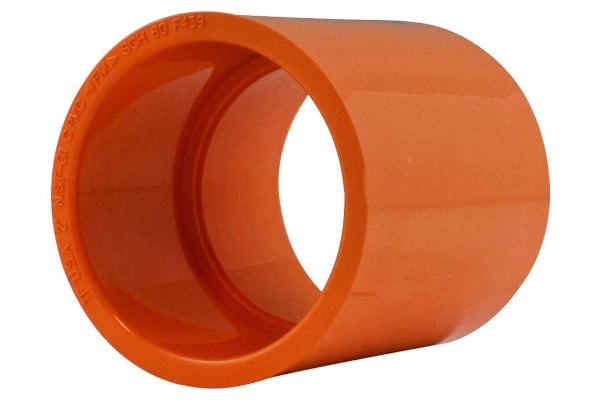
Devices connected to these pipes also require listings under NFPA 13, including:
- Nonmetallic pipe fittings (7.4.3)
- Fittings connecting threaded steel pipes, when those pipes have wall thicknesses less than Schedule 30 or Schedule 40 (7.5.1.2)
- Welded fittings not meeting standards provided in table 7.4.1 (7.5.2.3.1)
- Joining methods not specifically described in NFPA 13 (7.5.5.1)
One notable exception to these listing requirements is the grooved coupling, which must only be “dimensionally compatible” with pipes, valves, or fittings (7.5.3.1). However, listings are required when those couplings don’t comply with the standard dimensions provided in ANSI/UL 213 (7.5.3.1.1).
Finally, grooved couplings must always be listed when used with dry pipe systems (7.5.3.2). The reason: due to reduced fire endurance and increased exposure to temperature extremes, grooved couplings serving dry pipe systems tend to degrade faster than their counterparts on wet-pipe systems.
Many other parts require listings, including fire sprinklers, accessories, and valves
Fire sprinklers
The standard for most fire sprinklers is UL 199, Automatic Sprinklers for Fire Protection Service. But sprinklers may be approved for more specific applications, including:
- Control mode sprinklers, which produce large droplets at low pressures. These are often approved (listed) under FM 2000
- Residential sprinklers (UL 1626, FM 2030), used in settings ranging from apartment complexes to family homes
- Early-suppression fast-response (ESFR) heads, listed in accordance with UL 1767 and/or FM 2008
The following fire sprinkler accessories also require listings:
- Nonmetallic hole-covering plates or escutcheons for fire sprinklers (2019 edition of NFPA 13: 7.2.6)
- Escutcheons for recessed, flush, or concealed sprinklers (7.2.6.2)
- Fire sprinkler cover plates (7.2.6.3)
It’s worth noting that metallic escutcheons don’t require listings for non-recessed pendent or horizontal sidewall sprinklers—but all other types do.
Valves
Valves that let contractors test the system or drain water during renovations don’t need to be listed (16.9.1.1). However, valves designed to control water supplies do (16.9.3.1.1 – 16.9.3.1.2). According to section 16.9.3.2, these valves—called listed indicating valves—always require third-party listings, with an exception: wrench-operated outdoor valves installed under a road box.
Other types of valves requiring listings include:
- Alarm (check) valves
- Dry pipe valves
- Pressure reducing valves
- Deluge valves
- Preaction valves
So many listings, so little time
We’ve barely scratched the surface of the listings required by NFPA’s various standards—to say nothing of the range of certifications offered by third-party organizations. Organizations like FM Approvals and UL have had more than a century to define what makes some products more reliable, effective, and safer than others, and their influence can be felt throughout the fire protection industry.
When in doubt about what’s appropriate, contact your local authority having jurisdiction and a professional fire protection installer.
If you’re looking for listed and approved fire protection products, take a look at QRFS’s selection. We carry a variety of products tested to rigorous standards, including:
- All fire sprinklers
- Residential fire sprinklers
- Brand-name recessed escutcheons
- Hose angle valves
- CPVC pipe fittings
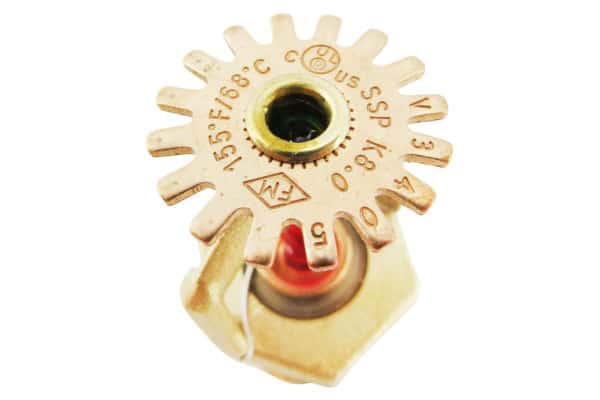
Browse our selection of fire and life safety equipment.
Questions about listing, approvals, or anything else? Looking for a listed product you didn’t see here? Call us at +1 (888) 361-6662 or email support@qrfs.com.
This blog was originally posted at blog.qrfs.com. If this article helped you get a handle on listings, check us out at Facebook.com/QuickResponseFireSupply or on Twitter @QuickResponseFS.


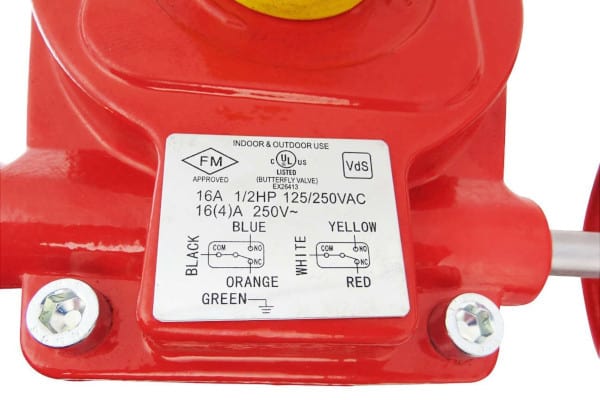
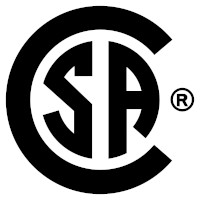
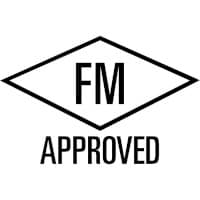
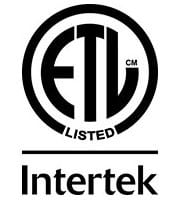
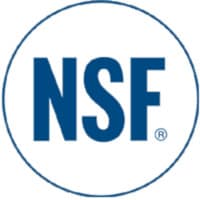
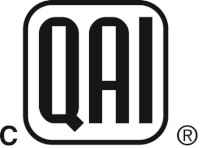
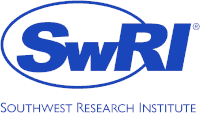
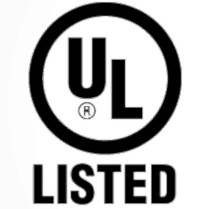

Dear
I need Criteria for galvanized connections of fire extinguishing system in UL or FM
Reza,
Thanks for reaching out. For code questions like this, we recommend submitting your question through QRFS Ask A Pro. Click the link to submit your question with some information about your building or system, and a fire protection professional will provide a detailed answer based on standards and codes. Our pros include AHJs, contractors, engineers, and code experts with 150+ years of combined experience!
I am looking for ULFM approval for Giacomini Valves.
Virgie — If you go to Giacomini’s website and click on their fire protection valves page, select the valve you are looking for, go to that page and click “Technical Documentation” below the picture. The UL listing and FM approvals should be at the bottom-left of the first page, such as on this one.
Hi We are looking for UL and FM Listed Fire pump ONE SET with following info
3 Vertical Turbine electric fire pump
Flow: 1500 GPM
Head: 9 bar
Speed 1750 rpm
Fluid : Water
Jokey Vertical Multistage pump rated for 1500 GPM, 11.5 bar
Thanks for reaching out. Unfortunately, we do not sell fire pumps.
We have a requirement of hydrant valves
Uma — Please let us know specifically what you need. Also, you can contact QRFS customer support via email to get a quicker response. Thanks!
What is the process for FM approval for accessories for fire protection?
Vinod – Generally speaking, a manufacturer submits a piece of equipment to FM Global (or UL) for testing for a specific purpose and pays for the process. This can be a somewhat expensive endeavor.
WOW just what I was searching for. Came here by searching
for website
Our company’s management is trying to decide if they can use a fire pump which doesn’t have FM approval. WE have a plant full of flammable liquids so fire protection is important to our insurer, and we’ve heard of some insurers being increasingly strict lately to the point they refuse to renew coverage when issues linger too long. There’s concern among our engineers the property insurance carriers won’t accept the pump so it could require a higher premium. Speaking with an engineer from one of the carriers, I got the impression UL listing was more important to him than FM, but I have no reason to think his opinion represents the entire insurance profession. Any thoughts on insurability of the specific listings described in the article?
Kowalski — Generally speaking an FM Approval or UL Listing are both regarded as valuable and sufficient, as long as one or the other is specific to the equipment and its intended function. But insurance carriers have their own specific requirements—and it’s best for you to consult individual potential carriers to review their preferences and mandates.
Does Gas Based Fire Suppression System with Mixed Up Components (Gas is FM Approved & Cylinder-accessories are UL listed) qualify for FM Global Insurance? What will be implications for this FM Insurance process.
Niranjan — Unfortunately, we don’t know the answer to this question. Contacting FM Global is your best bet!
Dear,
I want to know diesel engine driven fire pump and electric motor driven fire pump whice part is UL/FM approved or both both approved.
Ashim — both types are mentioned in NFPA standards. A reputable manufacturer and a fire protection contractor knowledgable in pump-dependent systems can help ensure you meet installation and system-specific requirements with the correct pump.
We need to approved our fire pump control panel UL & FM certified, plz know the process.
Hello Jigar — QRFS does not sell fire pump control panels. You can contact a qualified fire protection pro for their recommendation, or contact manufacturers like Eaton or Tornatech. The latter company provides a pretty thorough video overview of parts, standards compliance, and listings in this YouTube video. Best of luck and thanks for the question!
Test header of fire pump required to be UL listed or FM approved
Syed — We do not see a reference in NFPA 20: Standard for the Installation of Stationary Pumps for Fire Protection that states a test header should be listed. (General equipment requirements are in Chapter 4.) However, you should contact a local fire protection pro and your authority having jurisdiction (AHJ) to verify any specific requirements.
I wish to know if complete fire fighting system is complied to UL/FM standards I mean all equipment are UL/FM listed and the system is designed as per UL/FM regulations, then UL or FM gives certification of compliance. Is their any representative inspect the system for compliances in India?
Sanjay —
UL does not inspect systems for “UL compliance,” it simply writes standards and tests to ensure equipment works reliably and effectively. FM may have inspectors that inspect systems, but this is related to holding a specific insurance policy that requires them. The standard process is for you to have a local “authority having jursidiction,” such as a local or federal fire service inspector or an insurance company inspector for any insurers you deal with. Honestly, we aren’t sure precisely how this system works in India, but the general worldwide process involves government authorities having jurisdiction. Hope that helps and thanks for reading!
we have medium voltage fire pumps. for this medium voltage panel need to have UL and/or FM?
Mohamad — All diesel and electric fire pump *controllers* must be listed, regardless of voltage, per NFPA 20 (2022):
Hope that helps, thanks for reading!
requirements of Sprink;e 1/2″ with 1.5 meter pipe UL/FM listed
Reshma — We’ve forwarded your request to QRFS support, and you can always email them at support@qrfs.com for faster service than commenting here. QRFS carries many 1/2″ NPT sprinklers, but we’ll need to clarify what you are looking for regarding the pipe. Thanks!
Is the potable water pipe feeding fire hydrant needs to be UL/FM
Ali — We are not well-versed in listings for underground potable water pipes, though there are relevant “listing/approval” bodies that codes specify, such as NSF/ANSI 61.
All firefighting system supports must be UL listed and FM approved. Is this correct or need not necessarily as per code.
Suhas — The general answer is “no, not always, but they might be.” Chapter 17 of NFPA 13 (2025) has various rules for supports, hangers, and braces, with various weight-handling requirements, etc. Some items, like below, require an explicit listing:
However, as you see, there are exceptions to “components of hanger assemblies,” and various rules for other items. You can closely read that NFPA 13 chapter to see what requires what. Thanks for reading!
Dear Team,
I hope this msg finds in Good Health!
I want to obtain certification for UL and FM Global regarding fire rated doors which ensures ability to withstand fire, smoke and heat.
Please help me how can i contact with relevant person on email or phone?
Sadaqat — To get a product UL-listed or FM Approved requires submitting the product to a qualified testing facility that evaluates the product according to a relevant standard. Your best bet to learn more about how to do that involves contacting these organizations. For example, here is UL page regarding certifications, and here is UL’s contact page. Thanks for reading and good luck!